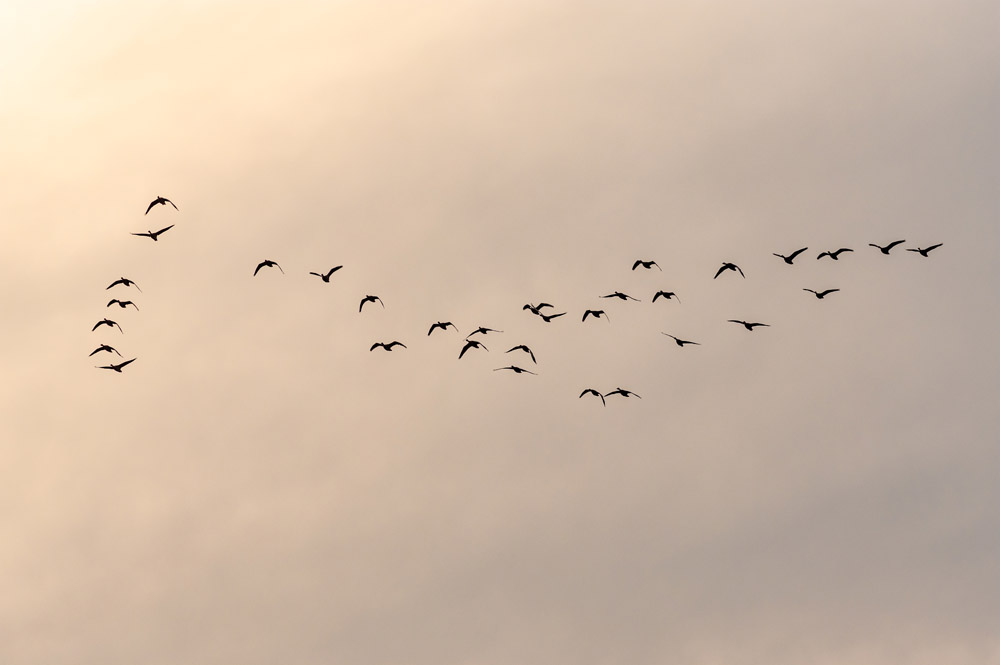
An image which may or may not be related to the article. FREEPIK
Why Do Animals Migrate? The Great Journeys of Nature
Summary:
Every year, millions of animals embark on journeys that defy reason—crossing continents, navigating oceans, and enduring conditions that would break even the toughest human travelers. From the Arctic tern’s 44,000-mile round trip to wildebeest stampeding across the Serengeti, migration is one of nature’s greatest spectacles. But why do animals do it? What compels them to risk everything for the sake of movement? Let’s follow the tracks of the world’s most legendary travelers and uncover the secrets behind these incredible migrations.
Picture a sky filled with thousands of birds in perfect formation, cutting through the air like precision-guided missiles. Beneath them, herds of wildebeest pound across the earth in a chaotic yet somehow synchronized stampede. And deep below the ocean surface, whales glide across vast, invisible highways, following paths carved into their DNA long before humans even understood the concept of travel.
Migration isn’t just a journey—it’s an epic, relentless drive for survival. But what makes an animal decide that home is no longer home? Why do they abandon one place in search of another, risking predators, starvation, and exhaustion along the way?
The answer is simple and complex all at once: instinct, survival, and sometimes, sheer madness.
The Call of the Wild: Why Migration Happens
Migration isn’t a luxury; it’s a necessity. It’s what separates those who survive from those who don’t. The reasons behind it are as varied as the creatures that undertake these perilous journeys, but most migrations boil down to three key factors:
Food and resources: When winter turns a lush feeding ground into an inhospitable wasteland, many animals have no choice but to move. Birds leave the frozen north, whales chase seasonal blooms of plankton, and caribou march in search of fresh grazing land.
Climate and temperature: Some animals follow the warmth, escaping brutal winters by heading south and returning when the seasons shift again. Monarch butterflies, for example, are delicate creatures with no tolerance for the cold, so they embark on a transcontinental odyssey to find refuge.
Reproduction and survival of offspring: For many species, migration is a matter of securing a future. Sea turtles haul themselves onto beaches thousands of miles away from their feeding grounds to lay eggs. Salmon battle upstream, defying gravity and bears alike, just to reach their birthplace and spawn.
In short, migration is a survival strategy—one written in the language of instinct, carved into genetic memory over thousands, sometimes millions, of years.
The Greatest Journeys on Earth
Some migrations are so extreme, so absurdly grueling, that they make human endurance races look like a walk in the park.
Arctic terns: These small seabirds hold the record for the longest migration of any creature on Earth. They travel from the Arctic to Antarctica and back again—44,000 miles (71,000 km) in a single year. That’s like flying around the planet nearly twice, fueled by nothing but fish and a stubborn refusal to stay put.
Wildebeest: The Great Migration in Africa is one of nature’s most astonishing spectacles—over 1.5 million wildebeest, along with zebras and gazelles, migrate across the Serengeti in an endless cycle of life, death, and the pursuit of greener pastures. Their journey is so perilous that thousands perish along the way, claimed by exhaustion, predators, and treacherous river crossings.
Monarch butterflies: Unlike most migrating animals, monarchs don’t make it back. Instead, their journey from North America to Mexico spans multiple generations. The butterflies that begin the journey will never see its end—their great-grandchildren will complete the return trip, guided by instincts that defy explanation.
Humpback whales: These oceanic nomads travel up to 16,000 miles (25,000 km) every year, moving between polar feeding grounds and tropical breeding areas. They navigate using an internal map—one still largely mysterious to scientists—allowing them to return to the exact same waters year after year.
Each of these migrations is a masterpiece of endurance, an evolutionary gamble that has paid off for millennia. But as human activity continues to disrupt ecosystems, migration is becoming more dangerous than ever.
The Roadblocks to Migration
Migration used to be a flawless system—animals moved, the environment responded, and the cycle continued. But now, the very landscapes these creatures depend on are vanishing. Deforestation, climate change, pollution, and human-made barriers like cities, roads, and fences are turning once-reliable migration routes into deadly traps.
Some animals are adapting—urban peregrine falcons now hunt in concrete jungles instead of cliffs, and some species are shifting their migration routes entirely. But for many, change is happening too fast. Monarch butterfly populations are plummeting. Caribou herds are thinning. Whale migrations are being disrupted by noise pollution and shifting ocean temperatures.
Without migration, many of these species won’t survive. And if we lose them, we lose more than just animals—we lose a fundamental part of nature’s rhythm, a spectacle that has defined life on Earth long before we ever walked upright.
The Eternal Journey
Migration isn’t just about movement. It’s about survival, adaptation, and an ancient rhythm that continues despite the obstacles.
As I watch a flock of birds vanish into the horizon, heading toward some distant, sun-drenched land, I can’t help but admire the sheer madness of it all. No maps. No hesitation. Just instinct and an unwavering determination to follow the path carved into their blood.
Because in the end, migration isn’t just a choice—it’s destiny.
 muppazine
muppazine